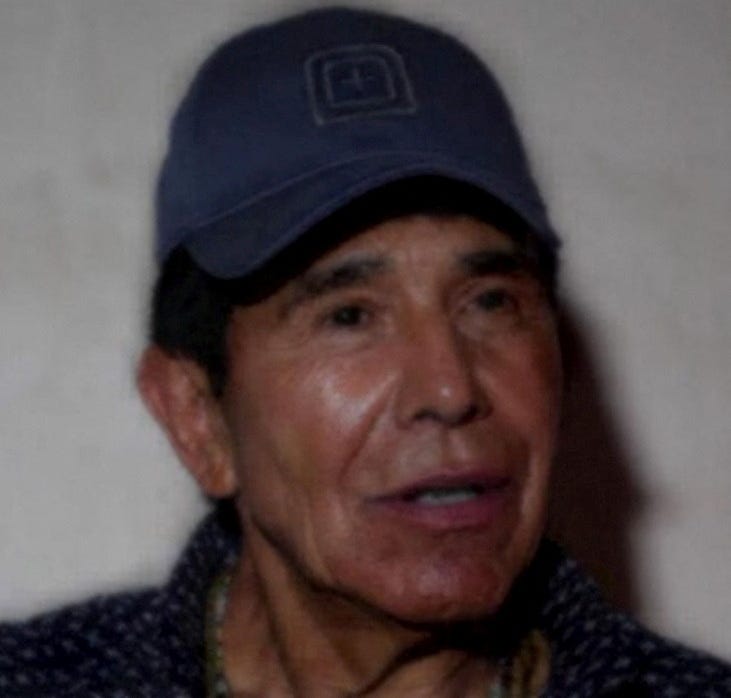
Mexico Surrenders Key Cartel Figures to U.S. Amid Trade Tensions
Mexico City – In a move signaling a potential shift in its approach to combating drug trafficking and organized crime, Mexico initiated a large-scale extradition of nearly 30 individuals linked to powerful drug cartels to the United States on Thursday. The handover included both aging kingpins from the cocaine and heroin era and younger leaders implicated in the surge of fentanyl trafficking. The extradition comes as Mexico faces mounting pressure from the United States to curb the flow of illicit drugs and migration across its borders.
The decision to extradite such a significant number of high-profile figures at once marks a notable escalation in bilateral cooperation between the two countries. While Mexico has historically extradited individuals to the U.S., the scale of this particular operation is unprecedented in recent years. Mexican authorities confirmed the handover of 29 individuals to U.S. law enforcement, but did not provide specific names in their initial statement.
The timing of the extradition has raised eyebrows, coinciding with threats from the United States to impose substantial tariffs on Mexican goods. The U.S. has accused Mexico of failing to adequately address the fentanyl crisis and manage migration flows, prompting the tariff threats.
Among those being extradited is Jose Angel "El Guerito" Canobbio, a high-ranking member of the Sinaloa Cartel’s Chapitos wing, which is heavily involved in fentanyl trafficking. The inclusion of Canobbio underscores the U.S.’s focus on dismantling the networks responsible for the influx of this deadly opioid into the country.
The most prominent name on the list is Rafael Caro Quintero, a notorious veteran cartel boss convicted of the 1985 murder of U.S. Drug Enforcement Administration (DEA) agent Enrique "Kiki" Camarena. Caro Quintero’s extradition is a symbolic victory for the U.S., which has long sought to bring him to justice for Camarena’s brutal killing.
Caro Quintero co-founded the Guadalajara Cartel, which was once among the most powerful drug trafficking organizations in Latin America. He spent 28 years in prison for Camarena’s murder but was controversially released in 2013 on a technicality by a Mexican judge. He subsequently returned to drug trafficking before being recaptured by Mexican authorities in 2022.
Another notable figure being extradited is Antonio Oseguera Cervantes, the brother of Nemesio Oseguera Cervantes, also known as "El Mencho," the leader of the Jalisco New Generation Cartel (CJNG). The CJNG is one of the most powerful and violent drug cartels in Mexico and is heavily involved in fentanyl trafficking. The U.S. government has offered a $15 million reward for information leading to El Mencho’s arrest.
The U.S. considers the CJNG and the Sinaloa Cartel to be the two primary Mexican drug gangs responsible for the surge of fentanyl on American streets. Fentanyl, a synthetic opioid, is significantly more potent than heroin and has been linked to a surge in overdose deaths in the U.S.
Data from a U.S. official indicates that Mexico extradited an average of 65 wanted criminal suspects per year to the U.S. between 2019 and 2023. This single-day mass extradition represents a substantial increase in the pace of such transfers.
Caro Quintero is expected to arrive in New York later on Thursday, where he will face drug trafficking charges. A former official familiar with the operation noted that the extradition sends a message that the U.S. will never forget if its agents are harmed or killed.
Some analysts believe that the mass extradition is intended as a gesture of goodwill towards the United States ahead of crucial trade negotiations. The U.S. has threatened to impose tariffs of 25% on all Mexican goods, potentially as early as next week. These tariffs would have a significant economic impact on Mexico, which sends 80% of its exports to U.S. buyers. Top Mexican officials were in Washington on Thursday for meetings aimed at averting the imposition of tariffs.
A U.S. source familiar with the matter suggested that the extradition demonstrated "good faith" on the part of the Mexican government.
In addition to the cartel leaders mentioned above, the extradition also includes top leaders of the hyper-violent Zetas gang. Miguel Angel Trevino Morales, known as Z-40, and Oscar Omar Trevino Morales, known as Z-42, two suspected former leaders of the violent Los Zetas drug cartel, were also being sent to the U.S., according to the Webb County Sheriff’s Office in Texas.
The Zetas are known for their particularly brutal tactics, including dissolving rivals in acid. Both of the Trevino Morales brothers were captured by Mexican soldiers over a decade ago.
It remains unclear whether Mexican officials followed formal extradition procedures in all cases, or if they opted to bypass certain legal or diplomatic requirements. The lawyer for the Trevino Morales brothers stated that he had not been officially notified of the extraditions.
Neither the White House nor the U.S. State Department have yet commented on the extraditions. The transfer marks a critical juncture in the ongoing efforts to combat drug trafficking and transnational crime.
